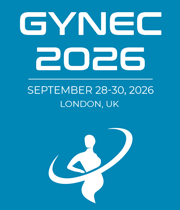Title : Exploring providers practices and attitudes to pain management during IUD insertion (PAIN) Study
Abstract:
Background: Intrauterine devices (IUD’s) are one of the most effective contraceptives to prevent unintended pregnancies; however, pain during insertion serves as a significant barrier to uptake. This study explores the clinical practices of California healthcare providers regarding pain management during IUD insertions. To date, only one U.S. study has examined provider decision-making, highlighting a critical literature gap.
Methods: We conducted semi-structured interviews with twenty healthcare providers in California to explore their attitudes and decision-making around pain management during IUD insertions. Providers were recruited using convenience sampling and participated in 35–45-minute Zoom interviews.
Transcripts were thematically analyzed using both deductive and inductive coding. Coding was conducted in Dedoose by a multi-person research team with discrepancies resolved by consensus. Thematic saturation was reached by the 10th interview.
Results: Pain management practices varied substantially across providers and settings. NSAIDs were routinely offered while the use of local anesthetics varied widely and based on factors such as availability, provider comfort, and perceived clinical need. Some providers reported standardizing local anesthetic across all patients, while others tailored interventions based on procedural complexity or patient request. Benzodiazepines and sedation, while not a part of routine procedure, were utilized for highly anxious patients or upon specific request.
Clinical decision-making was shaped by multiple factors. Providers referenced using patient characteristics (e.g. anxiety, nulliparity, trauma history, first pelvic exam) in their tailoring of pain management practices. Many described a shifting trend towards local anesthetic use, citing heightened patient awareness and increased training. Motivations for offering pain management often stemmed from a desire to reduce barriers to IUD access, even when certain methods were perceived as ineffective.
Several training and knowledge gaps were reported. Many providers described insufficient pain management education during their clinical training, citing their practice to be largely informal, acquired through peer mentorship or on-the-job experience. Providers also noted patients often lacked awareness of what the IUD insertion process entails, including available pain relief options. Many reported that misinformation, particularly from social media, frequently shaped patient expectations.
Numerous barriers to pain management practices were reported, including lidocaine shortages, limited training in paracervical blocks, and time constraints, with challenges most pronounced in lower-resourced health centers.
Conclusion: The recent release of the first pain management guidelines by ACOG and the CDC marks a critical shift toward improving patient-centeredness in IUD care. However, our findings underscore the wide variability in provider practices, shaped by structural barriers, level of training, provider discretion, and gaps in patient awareness. Systemic challenges including equipment shortages, limited paracervical block training, and time constraints pose significant limitations to delivering consistent and equitable care, particularly in underserved settings. These findings highlight the need for sustained efforts to ensure that national recommendations are meaningfully translated into clinical practice. Targeted investments in provider training, patient education, and reliable access to pain management supplies are essential to close equity gaps.. Additionally, providers’ own reflection of care gaps and lack of anesthetic standardization underscores the importance of individual accountability to foster consistent, equity-driven practices.




